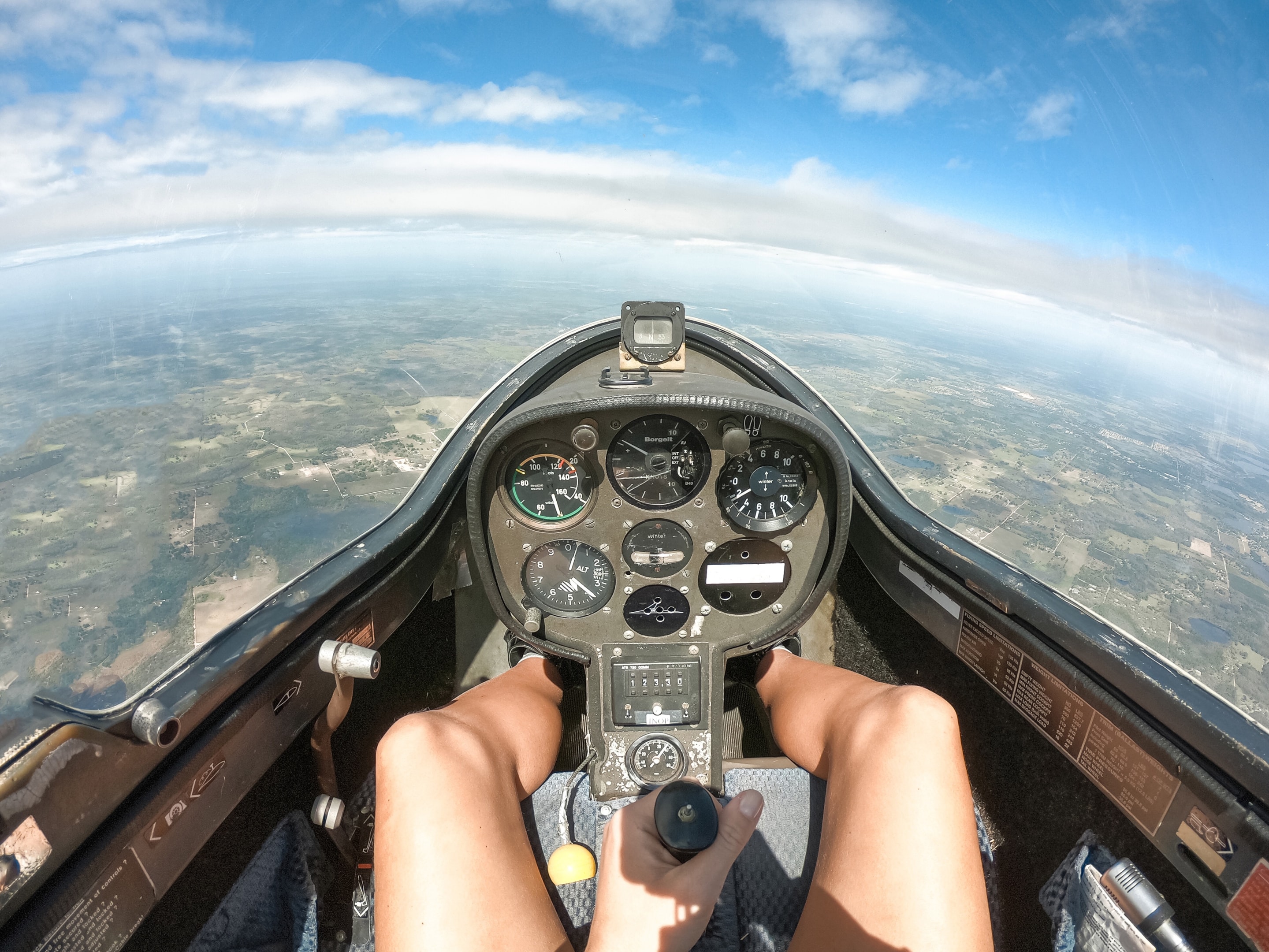6 Pack Flight Instruments: Ultimate Pilot Guide
Oct 24, 2024Importance of the 6 Pack Instruments
The six pack aircraft instruments serve as an essential toolkit for pilots, ensuring that they can navigate with precision and safety. These instruments are universally recognized within the aviation industry as vital for every pilot’s arsenal, no matter their level of experience.
The Pilot's Eyes and Ears
Just like our senses help us understand the world, the six pack is the pilot’s eyes and ears in the air. They give us the data we need to deal with the dynamic and changing conditions of any flight.
Navigate with Confidence
Mastering these instruments means enhancing a pilot's ability to fly with confidence and accuracy. It is a critical aspect of developing a pilot's skills and contributes significantly to the overall safety and success of every flight.
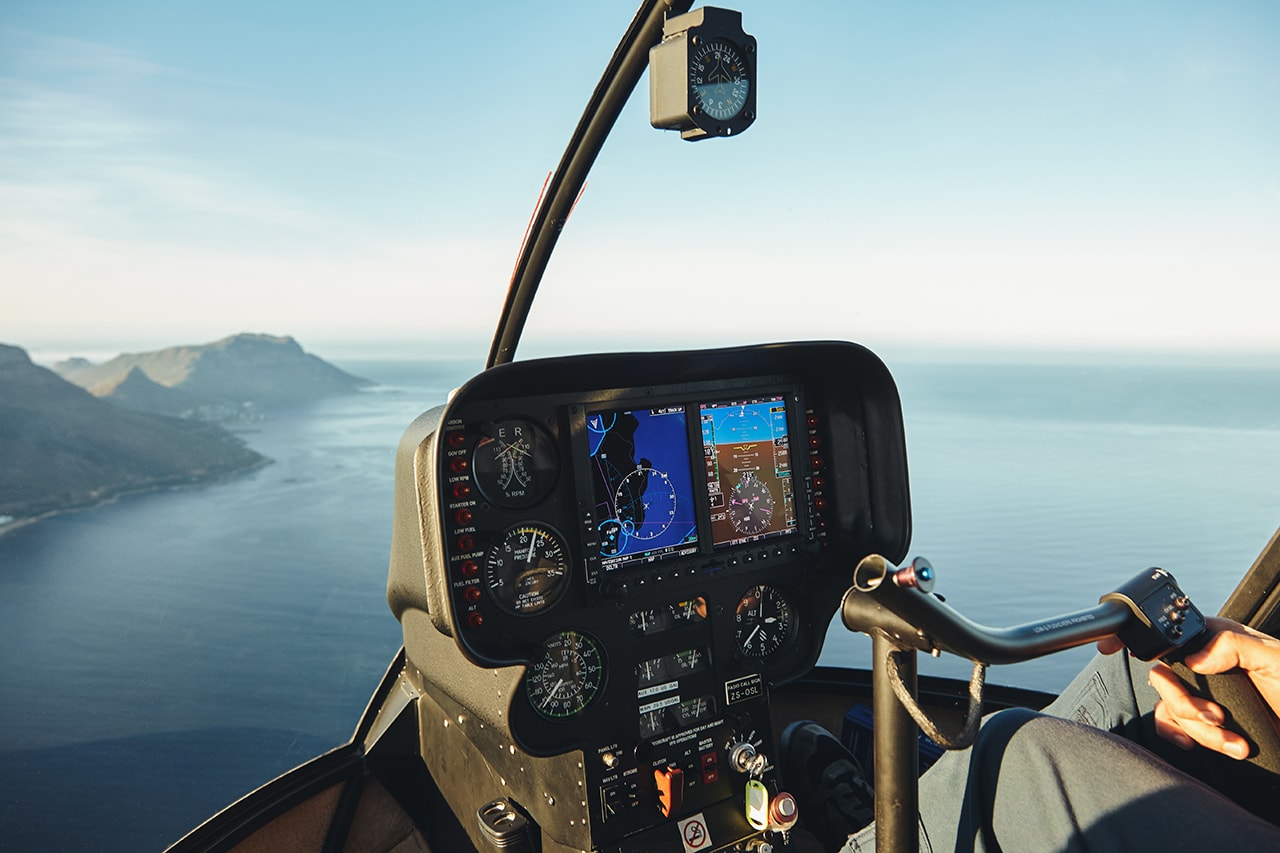
Standard Instrument Set
The six pack is a standard set of instruments found in every cockpit. They give you the information you need consistently and reliably so nothing gets missed while flying.
Real-Time Flight Data
Included in the six pack are instruments that offer real-time updates on aircraft speed, the aircraft's altitude, and whether the plane is climbing or descending. This is key to control and a smooth flight path.
Staying on Course
Pilots use these instruments to get guidance on the aircraft’s attitude, heading, and banking turns. That’s the foundation of navigation. Flying them well means you can make good decisions and fly safer and more efficiently.
The Altimeter
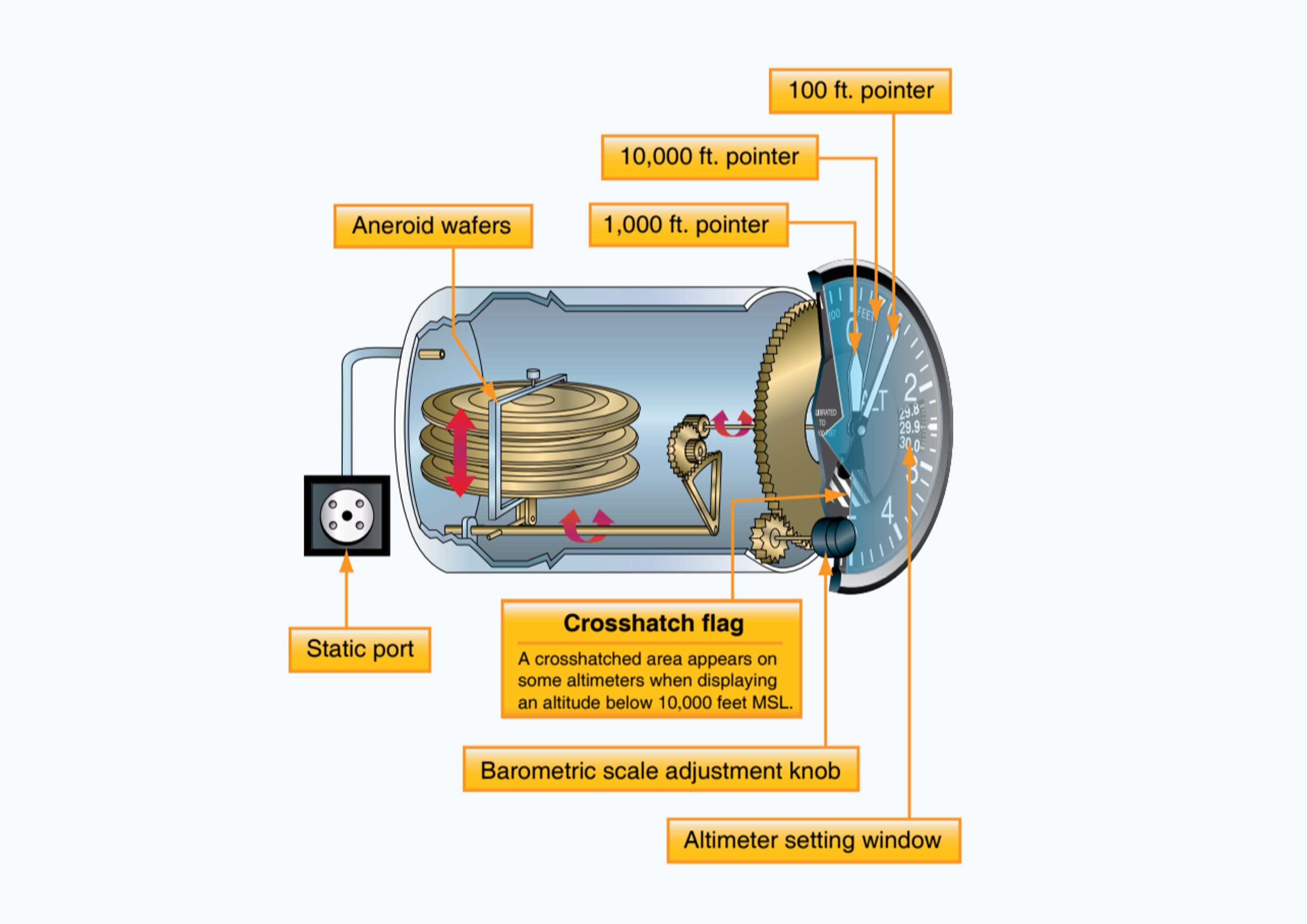
The Altimeter is a crucial component of the six pack flight instruments, specifically designed to measure the aircraft's altitude above sea level.
Its primary purpose is to provide pilots with the necessary altitude information, which is essential for safe navigation through different layers of airspace and ensuring a collision-free flight.
Functionality and Importance
-
Functionality: The Altimeter works by measuring atmospheric pressure. As the aircraft gains altitude, the atmospheric pressure decreases, and the Altimeter converts these pressure changes into a readable altitude display for the pilot.
-
Importance in Aviation: Accurate altitude measurement is vital for maintaining proper separation between aircraft, avoiding obstacles, and ensuring a safe approach during landing. Reliable altitude data is integral to maintaining the overall safety and efficiency of flight operations.
Common Types of Altimeters
-
Aneroid Altimeters: The most basic type, using a barometric pressure reading to determine altitude, commonly found in general aviation aircraft.
-
Radio Altimeters: More advanced, using radar waves to provide altitude information, especially useful for low-altitude operations and precision approaches.
Tips for Pilots
-
Regular Calibration: Ensure the Altimeter is consistently calibrated to the local barometric pressure to maintain accuracy.
-
Understanding Indications: Familiarize yourself with how the Altimeter readings change with temperature and pressure variations to interpret altitude correctly.
-
Cross-Check: Always cross-check the Altimeter with other instruments and visual cues, especially during landing and takeoff phases, to confirm the accuracy of readings.
Gyroscopic Instruments
Attitude Indicator (AI)
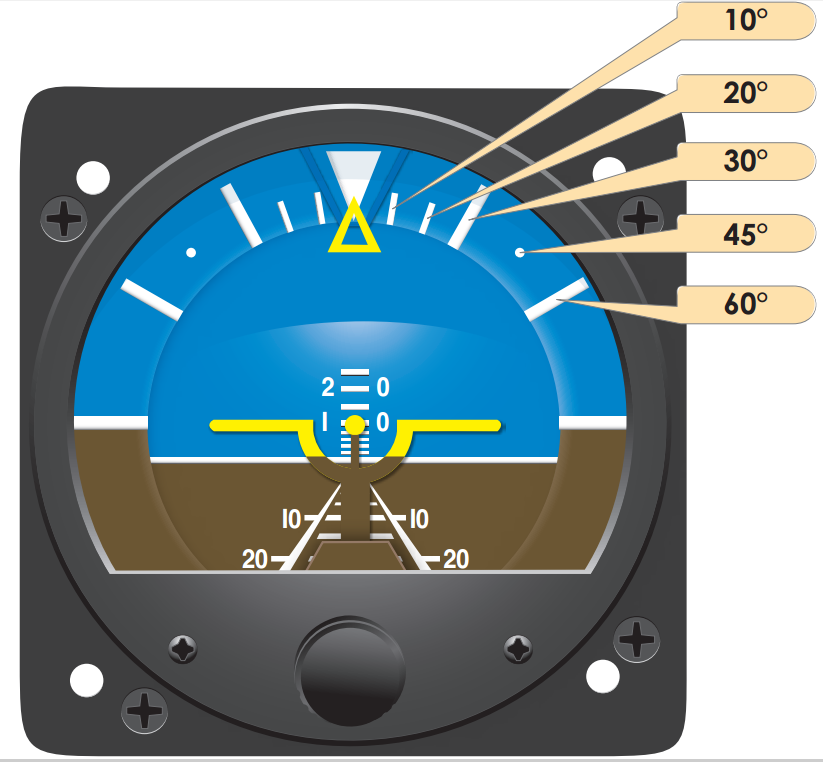
The Attitude Indicator (AI) is the most important instrument in the cockpit. It tells you where the aircraft is in relation to the horizon. It shows you the bank and pitch angle which is essential for orientation.
Especially during Instrument Flight Rules (IFR) conditions where visibility is limited, the AI guides you when you can’t see. That’s why it’s a must have for safe navigation through clouds or at night.
The AI uses a gyroscopic system. At the heart of it is a gyroscope which stabilizes an artificial horizon bar that follows the real horizon. That’s why it’s accurate and reliable.
Among all instruments in the cockpit the AI stands out for its ability to give you an immediate and direct readout of the aircraft’s position. So, you can react fast to any changes in the aircraft’s position.
In short, the Attitude Indicator is for pilots, real time information for safety and confidence in any situation. Its ability to show you the attitude of the aircraft means you’re in control even in tough situations.
Heading Indicator (HI)
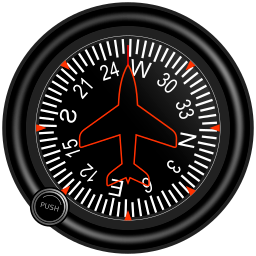
The Heading Indicator (HI) is a vital instrument in the aircraft, giving the pilot accurate information on the direction the plane is pointing. This helps the pilot to steer the aircraft exactly, to be on course.
Although useful, the HI drifts over time. So it needs to be adjusted regularly by reference to the magnetic compass. This ensures the heading readings are accurate and reliable in flight.
Unlike a magnetic compass, the HI uses a gyroscopic mechanism. This has a gyroscope that spins on a lateral horizontal axis, unlike other navigation instruments.
The gyroscope in the HI gives it short term directional stability. This gives the pilot immediate direction information to stay on track.
In summary the HI is a navigation instrument, a stable reference for heading but needs to be adjusted periodically to be on true courses.
Turn Coordinator

The Turn Coordinator is a gyroscopic instrument that tells you the rate of turn and bank angle. It has a rotating dial with a ball, an inclinometer, that shows the quality of the turn.
This is crucial for being in a coordinated turn, meaning the rudder input is balanced so the plane isn’t slipping or skidding. The Turn Coordinator is calibrated for a standard rate turn of 3 degrees per second which is important for controlled and precise flying.
Pitot-Static Instruments
Pitot-static instruments are part of an aircraft’s avionic systems and give pilots in-flight data by measuring ram air pressure. They gather information from the air outside using components like the static port.
Airspeed Indicator

The airspeed indicator is the most important of the pitot-static instruments. This vital tool tells you how fast the aircraft is moving through the air. It is key to safe flight.
How It Works
The airspeed indicator uses two main parts: static ports and the pitot tube. Static ports measure the air pressure around the aircraft. Pitot tubes measure the ram pressure of the air the airplane is moving through. Together they calculate dynamic pressure which equals airspeed.
Why It Is Important
Airspeed is critical for pilots as it affects almost everything you do in flight. Apart from keeping the aircraft at a safe speed, it also affects other flight decisions like thrust or altitude.
Speed Measurement Units
The airspeed indicator measures speed in knots, a unit specifically used in aviation and maritime contexts. This equates to approximately 1.85 kilometers per hour, offering an accessible way for pilots to comprehend and manage speed in various conditions.
Vertical Speed Indicator (VSI)
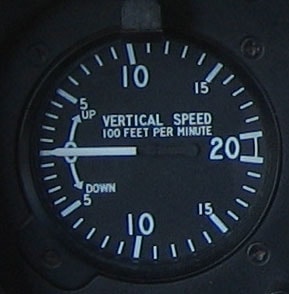
The Vertical Speed Indicator (VSI) is a must have for pilots, it shows you how fast you are climbing or descending in real time.
It measures the Rate of Climb (ROC) or Rate of Descent (ROD) in feet per minute, so you can see exactly how the aircraft is moving vertically.
This works by using the static ports of the aircraft to measure the pressure changes. As you climb or descend the pressure changes are detected by the VSI so you can see the vertical speed.
One of the biggest benefits of the VSI is to help you maintain level flight. By showing you the rate of vertical movement you can make the necessary adjustments to keep the aircraft at the same altitude.
The VSI is better in smooth air than an altimeter for altitude changes. Its quicker response time lets you react faster to any changes, so you can fly safer and more efficiently.
Overall, the VSI is a must have that enhances flight safety by giving you detailed and responsive readings of the aircraft’s climb or descent.
For pilots understanding and using the VSI properly can make a big difference in flight management and decision making.
Instrument Scanning and Interpretation
Instrument scanning is key to safe and efficient flying. It’s the process of systematically scanning various flight instruments to gain situational awareness and make decisions during flight.
The six-pack scan is the most common scan in aviation. Pilots move their eyes across the instruments in the cockpit depending on what they need to monitor at the moment.
The “Basic T” scan is used during straight and level flight. This pattern helps you keep track of three key indicators: altitude, direction and airspeed, so the plane stays on course and in the right conditions.
For more precise monitoring the “T” scan is used. This is an organized eye movement from the Attitude Indicator to the Heading Indicator, to the Altimeter and back to the Attitude Indicator. This helps to maintain stable and controlled flight paths.
In the end, mastering these scans allows pilots to read instrument data quickly and respond to changing flight conditions. With practice and patience pilots will get better and safer flying.

Instrument Flying Techniques
Instrument flying techniques is a key skill for pilots. It’s understanding and using 6 basic flight instruments. These are the backbone of navigation and control when there are no visual references, such as in bad weather or at night.
The 6 basic instruments are common in commercial aviation and are standardized across all aircraft types. This means once you learn these skills they are transferable across different cockpits so you can adapt quickly.
It’s not just a skill – it’s a requirement for any flight. Proficiency in these techniques means you can maintain course, altitude and speed accurately – and make every flight safer and more precise.
The six-pack is like laying the foundation stones for every pilot’s career. It gives you the knowledge to fly a flight and know you’re ready for anything that comes your way.
So, spend time learning and practicing these instruments and you’ll turn a good pilot into a great one.
You’ll be able to make decisions in real time and have a more confident and enjoyable flight for yourself and your passengers.
Instrument Calibration and Maintenance
Calibration and maintenance of the six pack instruments is key to their accuracy and reliability. Follow the manufacturer’s instructions for calibration and maintenance procedures to keep your instruments in top shape.
-
Pitot-Static System: The pitot-static system (pitot tube and static ports) should be checked for blockages or damage. These need to be clear and functioning properly for airspeed and altitude to be accurate.
-
Gyroscopic Instruments: Gyroscopic instruments (Attitude Indicator and Heading Indicator) should be checked for drift and precession errors. These errors can affect the instruments so regular checks and adjustments are required.
-
Altimeter: Altimeter needs to be calibrated to local barometric pressure before each flight. This will ensure altitude readings are accurate, which is critical for safe flight levels.
-
Airspeed Indicator: Airspeed indicator should be checked for accuracy by comparing to the aircraft’s true airspeed. This can be done during flight by cross referencing with GPS or other reliable sources.
By following these maintenance procedures, pilots can ensure that their six pack instruments provide accurate and reliable data, contributing to safer flight operations.
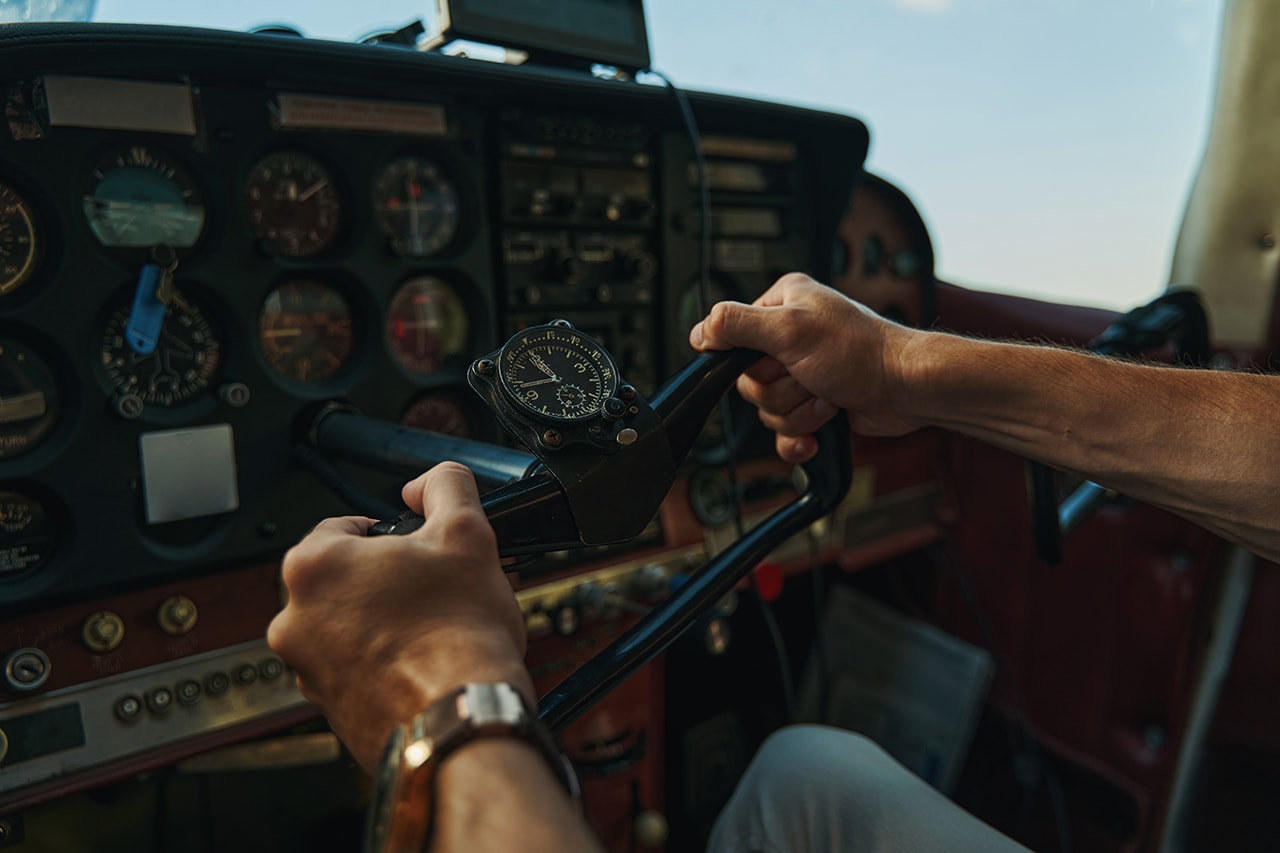
Common Instrument Errors and Troubleshooting
Pilots should be aware of common instrument errors and know how to fix them to get accurate readings and safe flight.
-
Airspeed Indicator Errors: Airspeed indicator errors are caused by blockages in the pitot tube or static ports. Check the pitot-static system for obstructions and make sure the instrument is calibrated. Regular checks prevent inaccurate airspeed readings which are crucial for safe flight speeds.
-
Altimeter Errors: Altimeter errors are caused by incorrect barometric pressure settings or blockages in the static ports. Check the altimeter baro setting before each flight and make sure the static ports are clear of debris. Accurate altitude is key to safe separation from terrain and other aircraft.
-
Gyroscopic Instrument Errors: Gyroscopic instruments like the Attitude Indicator and Heading Indicator can drift and precess. Check these instruments regularly for drift and make adjustments. These instruments must be accurate for proper aircraft orientation and heading.
-
Turn Coordinator Errors: Turn Coordinator errors are caused by incorrect calibration or gyroscopic system issues. Check the instrument for calibration errors and make sure the gyroscopic system is working. Accurate turn coordination is key to smooth turns.
Know the six pack and how to fix the errors and you’ll be flying safe and accurate. Maintenance and knowledge is key to mastering the six pack.
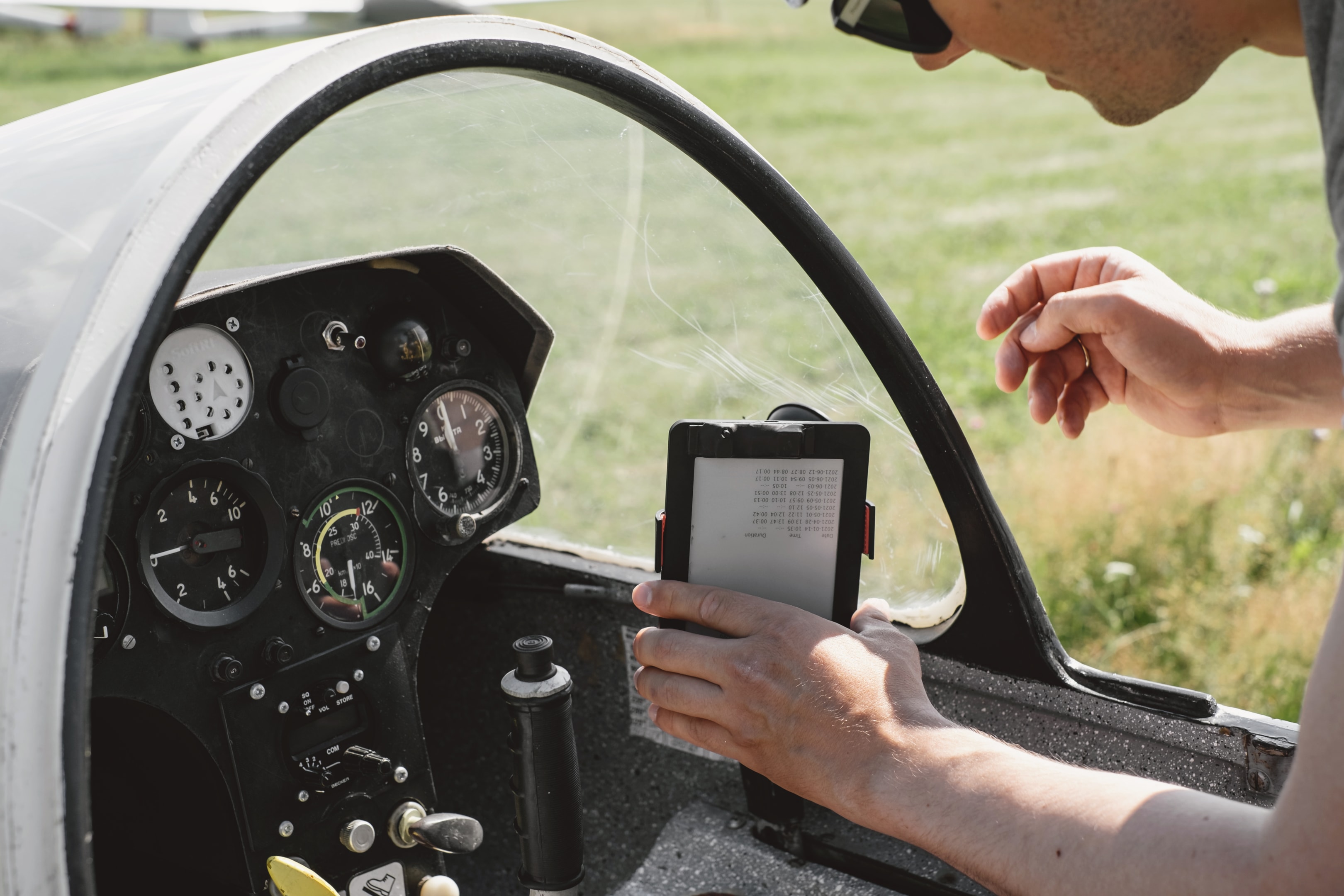
Modern Avionics and Glass Cockpits
Glass cockpits are a modern avionics advancement using multiple computer screens to show you the important flight info.
These screens can be customized so you can get the data you need at your fingertips. This makes situational awareness and operational ease.
At the heart of glass cockpits are the electronic Attitude and Heading Reference Systems (AHRS) and Air Data Computers (ADCs).
These give you a more precise and responsive flying experience with real time data on key flight parameters.
One of the big benefits of glass cockpits is their lightweight construction. By replacing traditional mechanical gyroscopic instruments, they reduce the overall weight of the aircraft which can mean better fuel efficiency and performance.
Plus, the reliability of glass cockpit systems adds to aircraft safety. Their robust design means fewer maintenance issues, so the overall dependability of the aircraft’s systems is improved.
In short glass cockpits make flying modern aircraft simpler and more intuitive. By combining technology and user-friendly interfaces they enable pilots to fly with more confidence and efficiency.
Best Practices for Mastering the Six Pack
Understanding the pitot-static system is essential for mastering flying instruments, often referred to as the 6 Pack Flight Instruments. This system provides crucial data about the airspeed, altitude, and vertical speed, making it vital for accurate navigation and flight safety.
Using the magnetic compass alongside local barometric pressure readings allows pilots to navigate effectively. This practice ensures that all compass readings are accurate, helping pilots maintain proper course and orientation throughout the flight.
Regular practice in scanning and interpreting instruments enhances a pilot's ability to read the six pack instruments efficiently. This skill is fundamental to making quick and correct judgments during flight, ensuring safety and precision.
Becoming familiar with the normal operating speed range and air pressure is critical for maintaining safe flight operations. This knowledge helps pilots manage the aircraft within safe limits, avoiding any operational dangers.
Finally, regular maintenance and checks of the six pack instruments are crucial. Ensuring these instruments are functioning correctly helps prevent unexpected failures, allowing for smooth and incident-free flights.
